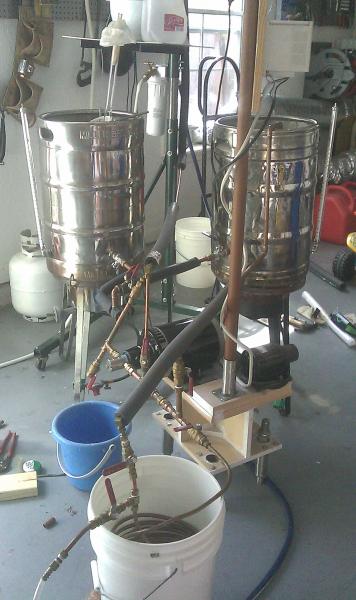tolip_ck1
Well-Known Member
What should I do, The system I built has the ability to do just about anything, but I am not understanding some basic ideas.
Once I am done with the mash and I start to collect wort should I add hot water on top of my grain (fly sparge) until I reach the total pre-boil volume?
Should I re-circulate the total pre-boil volume continuously onto my grain bed until I reach a certain OG?
Should I batch sparge the grains only with a pre-calculated volume of hot water and then add just water to the kettle until I reach a calculated volume?
sorry I am confused about what is the "Best,"
Again I have the ability to do almost any configuration with the system, direct fire or not RIMS system, fly/batch sparge etc.
Maybe this should be in the newbie section?
Once I am done with the mash and I start to collect wort should I add hot water on top of my grain (fly sparge) until I reach the total pre-boil volume?
Should I re-circulate the total pre-boil volume continuously onto my grain bed until I reach a certain OG?
Should I batch sparge the grains only with a pre-calculated volume of hot water and then add just water to the kettle until I reach a calculated volume?
sorry I am confused about what is the "Best,"
Again I have the ability to do almost any configuration with the system, direct fire or not RIMS system, fly/batch sparge etc.
Maybe this should be in the newbie section?



